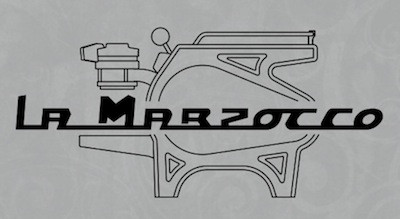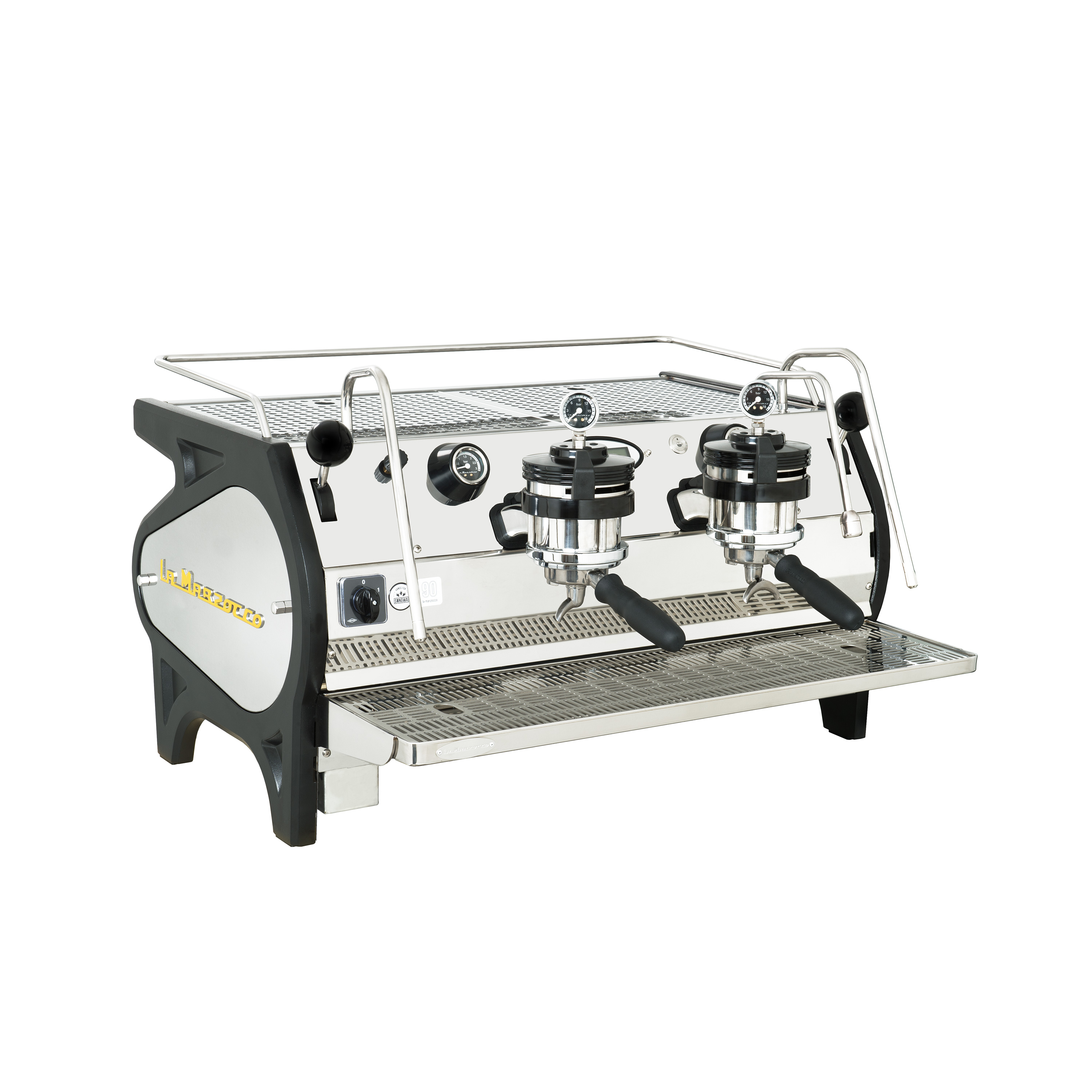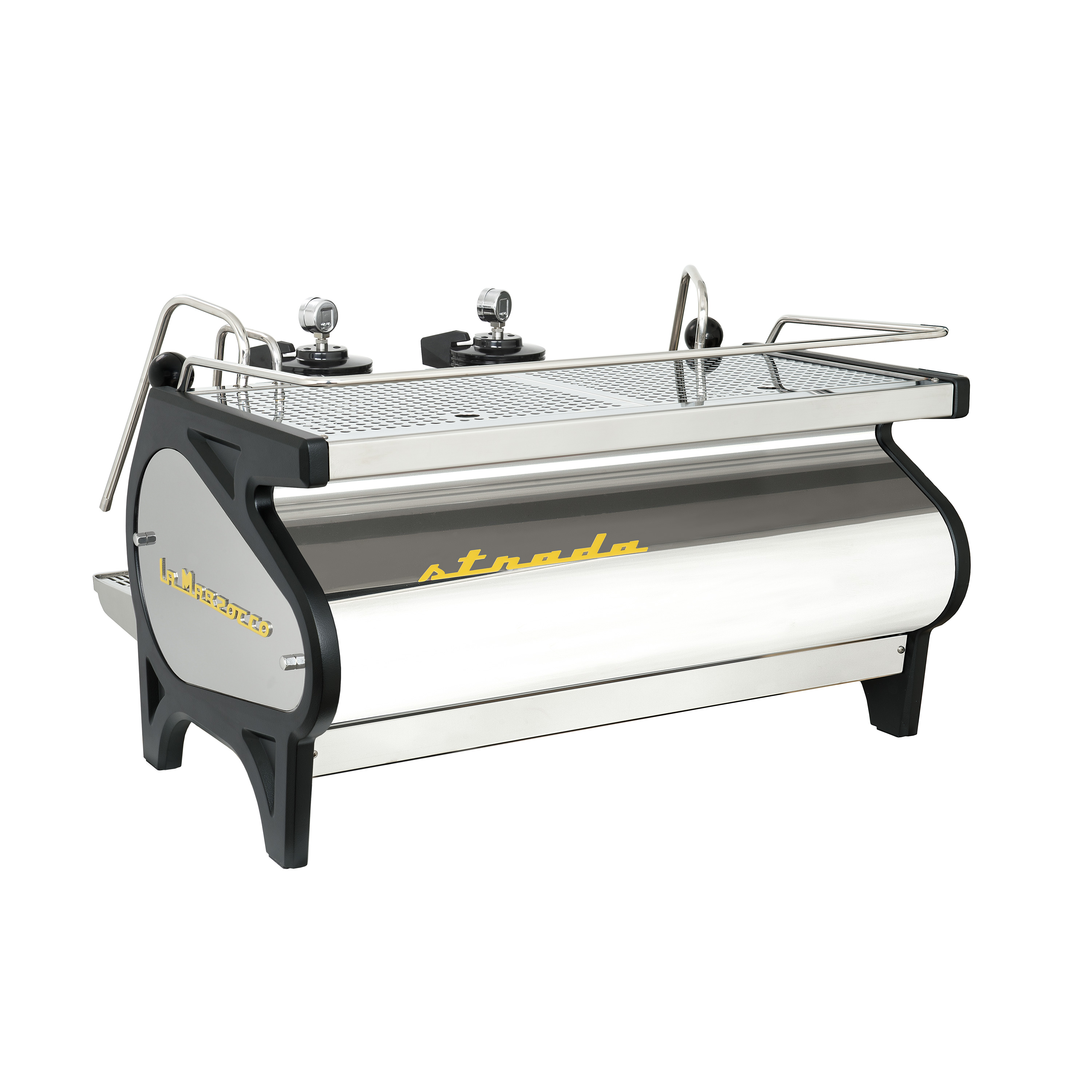La Marzocco Strada: First Impression
My first trip to NY was a whirlwind. I spent twice as much time on a bus as I did in the city and just as much time walking as I did at the La Marzocco Strada EP event co-sponsored by Counter Culture Coffee. So why go through the hassle? Awesome Chinese food and free espresso....oh and some fancy machine called a Strada...
My first trip to NY was a whirlwind. I spent twice as much time on a bus as I did in the city and just as much time walking as I did at the La Marzocco Strada EP event co-sponsored by Counter Culture Coffee. So why go through the hassle? Awesome Chinese food and free espresso....oh and some fancy machine called a Strada. No not a Strat but a Strada. Okay, so maybe the grub from Chinatown and the free drinks were a welcome surprise to the trip and maybe I already knew a few things about the latest big thing from La Marzocco, but nonetheless I would do it again every weekend for the rest of the summer if I could. Needless to say, the hour and a half I was able to spend with both the machine and new friends in the coffee community made the journey worth it and made me excited about the future of espresso. You can find details about the machine and why the coffee world won't be able to ignore it below.
Overview
If it’s not a sixteen year-old's dream guitar, what is the La Marzocco Strada? The Strada is the first of a new generation of espresso machines. It’s been a project years in the making, as La Marzocco fine-tuned a machine that would give baristas more control and analytics tools than they could have possibly dreamed of. The machine is now here and is slowly popping up at cutting-edge cafes around the U.S.
The Two Versions: Mechanical Paddle and Electronic Paddle
The Strada comes in two models, the MP (Mechanical Paddle) and the EP (Electronic Paddle). The Strada MP functions similarly to other La Marzocco Mechanical Paddle models. This model allows you to pre-infuse the coffee puck with lower water pressure before applying full pressure. The Strada EP takes pressure control to an entirely different level. Improving on the ability to go from a pre-infusion pressure level to full pressure, the EP model gives you precise and progressive pressure control. To steal some language from espresso grinders, this model of the Strada has stepless pressure adjustment. You can incrementally adjust the pressure from 0-12 bars. The barista can then store up to four different profiles. We'll look more at the possibilities this opens up below.
New Technology: Internal, Geared Pump
The secret to this amount of control in the EP is La Marzocco’s new internal, geared pump. This innovative pump allows for a variable pump speed. On all other La Marzocco machines (minus the GS/3), the pump used is a rotary pump. This pump, along with the motor, is installed remotely from the machine (normally under the counter). This single rotary pump is then in charge of pushing out the pressure for the entire machine. The small size of the new gear pump allows La Marzocco to include one gear pump per group within the machine. This not only saves space, but allows the pressure for each group to be controlled independently of one another. As mentioned above, the added bonus of the geared pump is the controlled, incremental pressure adjustments that can be made through the duration of the shot.
The Possibilities of Pressure Profiling on the Strada EP
The amount of possible profiles for any given shot opens a world of possibilities for crafting one's ideal shot for any given coffee. As has been the case with many manual brewing methods, the question is often raised, "How is it that you can reproduce the results of a profile that works?" Thankfully, La Marzocco has thought this through and programmed the Strada to give the barista the ability to save up to four profiles at any given time. These profiles map the pressure profile and time of extraction to allow the barista to reproduce the profile they deem ideal for the particular coffee and grind. The profiles act independently of the boiler temperature to enable the barista the ability to further play with the temperature after they've locked in a profile.
Since pressure profiling is such a new invention, there's a lot of speculation towards the benefits of the technology and it's ability to be accepted as a new standard. The Strada is on the outside fighting it's way in. After all, it is going up against a standard of proper espresso extraction that has been around for a long time. That being said, the ability to save profiles has giving more stability to pressure profiling and the more people experiment with the effects of this technology on the shot, the more converts there will be.
I didn't have nearly enough time to test and play around with the Strada at the event, but from the shots I did taste and a general familiarity with the affects of the various parameters on the extraction process, I can imagine some of the possibilities the Strada opens up. First of all, let's take a look at the possible advantages pressure profiling brings to the extraction process. One paramater that has remained constant over the years for espresso is pressure, or in relation to the coffee, turbulence. Turbulence does have an effect on the extraction process. Along with temperature and contact time, the amount of turbulence can slow or quicken the extraction process. For so long the magic number for pressure has been 9 bars at 20-30 seconds. As has been done with the Slayer Espresso Machine and it's variable pressure profiling, I'm looking forward to more experimentation with lower pressure (turbulence) at longer shot times and its effects on nuances in the shot. Additionally, the closer you get to the end of the extraction process the more "stressed" the grounds have become. It would then follow that lowering the pressure going into the final 5-10 seconds of the shot could help guard against over-extraction. Along with more control over pre-infusion, those are a couple of examples of how pressure profiling can positively contribute to the evolution of espresso. The verdict is still out how other pressure changes within the profile will affect the nuances of the shot, but as more machines make their way to the public, the better we'll understand the magnitude of this technology.
Now for the fun part, dreaming about the possibilities of the Strada EP within the context of a cafe. With the ability to save four profiles on the Strada EP, the barista could set a different profile for each coffee they offer. One profile for the standard espresso offering, one for the decaf, and perhaps one for a single origin offering. Furthermore, the barista could create two different profiles for their main blend. One profile could cater towards a taste they wish to achieve for espresso, the other cater towards what tastes best with milk-based drinks. This is perhaps one of the possibilities that has the most promise. Many roasters have to adapt their roast to take into effect how the espresso blend will taste both by itself and with milk. What if the Strada could take some of the burden?
Needless to say, the event thrown by La Marzocco and Counter Culture in NYC only furthered my excitement towards the possibilities of pressure profiling on the Strada EP. We may not fully understand the capabilities of this technology yet, but we know that the future of espresso is bright, sweet, balanced...or whatever profile you prefer.





